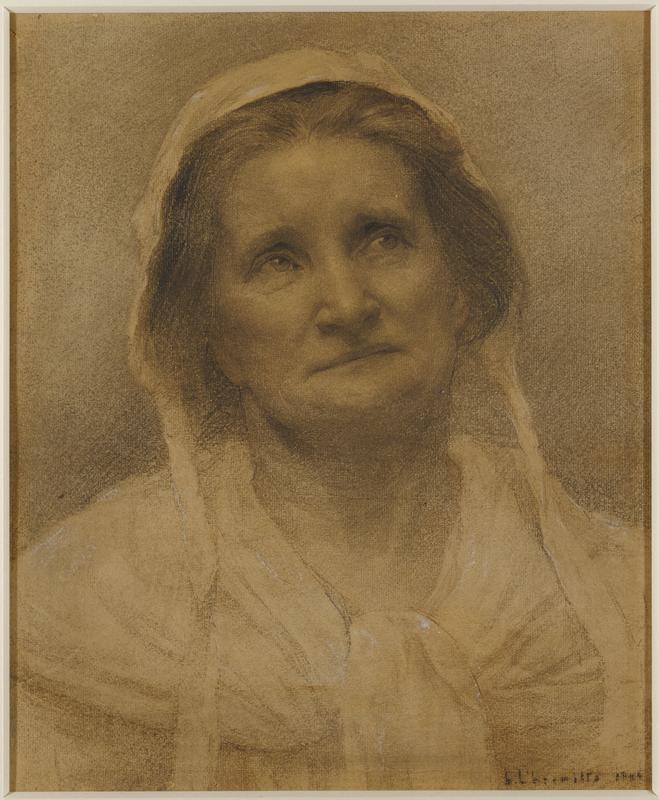
116. Léon-Augustin Lhermitte, Head of a Peasant Woman
| Artist | Léon-Augustin Lhermitte, French, Mont-Saint-Père, Aisne 1844–Paris 1925 |
| Title, Date | Head of a Peasant Woman, 1874 |
| Medium | Charcoal and chalk on off-white paper |
| Dimensions | 16 3/16 × 13 5/16 in. (41.1 × 33.8 cm) |
| Inscriptions + Marks | Lower right: Lhermitte 1874 |
| Provenance | [Altman/Burke Fine Art, New York until 1990; to Weisberg]; Yvonne and Gabriel Weisberg, Minneapolis (1990–2017; given to Mia) |
| Exhibition History | "Sketches / Studies / Statements," Mia, 2018; "Reflections on Reality: Drawings and Paintings from the Weisberg Collection," Mia, 2022–23 |
| Credit Line | Gift of Dr. Gabriel P. and Yvonne M.L. Weisberg 2017.44.8 |
Léon-Augustin Lhermitte’s sympathetic and informed portrayals of contemporary country life proved popular with Parisian audiences. Over a long career he made thousands of paintings, pastels, and charcoal drawings that depicted rural people and their ways. This accomplished study of a middle-aged woman, made when Lhermitte was thirty years old, identifies him as an artist of unusual maturity and powers of observation. We see him treating his humble subject with the same dignity and intense scrutiny that other artists devoted to paying sitters. The figure’s careworn face reveals inner strength even as her averted eyes betray some discomfort at being studied so closely. Lhermitte has captured the loose fleshiness of her neck, the hair that refuses to be contained by the simple bonnet. He took advantage of the rough texture of his paper, sometimes letting it keep the full load of pigment from the tip of his charcoal, sometimes smoothing over the texture by smearing the marks he had made.
Though no longer a household name, Lhermitte was celebrated in his own time. He was awarded the Legion of Honor in 1884 and won the grand prize at the 1889 Exposition Universelle in Paris. He also enjoyed success at the Paris Salon. Head of a Peasant Woman is one of four drawings by Lhermitte in the Weisberg Collection (cat. nos. 114–117). As a group, they represent several of his key themes, among them rural workers, small-town traditions, the academic nude, and, as here, portraiture.
TER